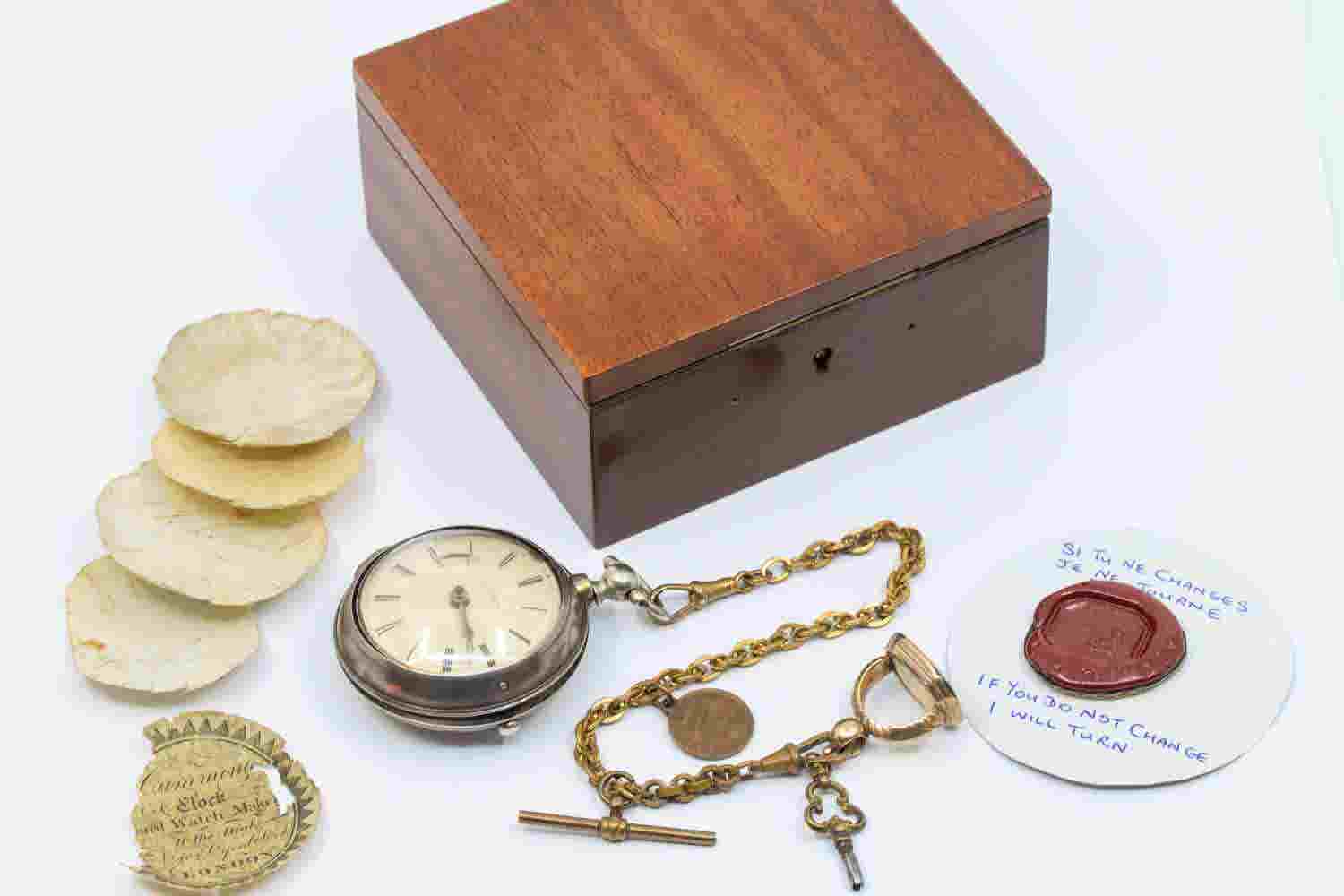Pocket watch ‘used by naval officer at Battle of Trafalgar’ set for auction
The secrets of the 235-year-old silver watch were revealed when it was taken for valuation at Hansons Auctioneers’ Derbyshire saleroom.

Your support helps us to tell the story
From reproductive rights to climate change to Big Tech, The Independent is on the ground when the story is developing. Whether it's investigating the financials of Elon Musk's pro-Trump PAC or producing our latest documentary, 'The A Word', which shines a light on the American women fighting for reproductive rights, we know how important it is to parse out the facts from the messaging.
At such a critical moment in US history, we need reporters on the ground. Your donation allows us to keep sending journalists to speak to both sides of the story.
The Independent is trusted by Americans across the entire political spectrum. And unlike many other quality news outlets, we choose not to lock Americans out of our reporting and analysis with paywalls. We believe quality journalism should be available to everyone, paid for by those who can afford it.
Your support makes all the difference.A pocket watch believed to have been used by a naval officer during the Battle of Trafalgar in 1805 is to go under the hammer at auction.
The 235-year-old silver watch was discovered alongside a handwritten note from 1897, penned by its 19th-century owner, James H Waters.
The note revealed the watch had belonged to his great-grandfather, Captain Charles Bennett, who had served on “the Tonnant at Trafalgar”.
The history of the watch was discovered when it was taken for valuation at Hansons Auctioneers’ Derbyshire saleroom by a Nottinghamshire collector who bought it around 20 years ago.
It is being offered in Hansons’ October 6 fine art auction with a guide price of £400 to £500.
Matt Crowson, Hansons’ militaria expert, said the handwritten note offered a fascinating insight into the watch’s history.
He said: “The note mentioned a seal which is attached to the watch chain. It was given to Bennett by a French officer serving on a ship called Algesiras.
“Bennett and members of his crew seized Algesiras during the Battle of Trafalgar – that makes it highly probable Bennett carried this watch with him through the battle.
“According to historical accounts, HMS Tonnant, originally a French naval vessel known as Le Tonnant until captured by the Royal Navy at the Battle of the Nile in 1798, played a crucial role at Trafalgar.
“During the battle, HMS Tonnant engaged in fierce combat with French 74-gun flagship Algesiras. After a collision between the vessels, the French attempted to board the Tonnant but they were repelled by British firepower.”
Mr Crowson said that Rear Admiral Magon, the French vessel’s commander, was killed during this “intense” engagement.
He added: “With the British gaining the upper hand, Lieutenant Charles Bennett led a boarding party of 50 men from the Tonnant, seizing control of the Algesiras.
“They took 270 French officers and men as prisoners below deck. However, with the Algesiras severely damaged and drifting away from the British fleet, the British sailors found themselves in a perilous situation.
“Realising they lacked the manpower to both guard the numerous French prisoners and repair the masts, Lt Bennett made a difficult decision. He ordered the hatches to be opened, releasing the French prisoners. The French quickly overpowered the British sailors and regained control of the vessel.
“Lt Bennett faced a stark choice – resist the French’s claim on the ship, likely resulting in his men’s demise, or co-operate and help save the vessel, sparing their lives.
“Bennett chose the latter option, working alongside the French to reassemble three of the masts. This allowed the ship to sail to Cadiz.
“While official records confirm Bennett as the 3rd Officer on HMS Tonnant during Trafalgar, the handwritten note referred to him as ‘Captain’, suggesting a promotion that likely occurred post-Trafalgar.”